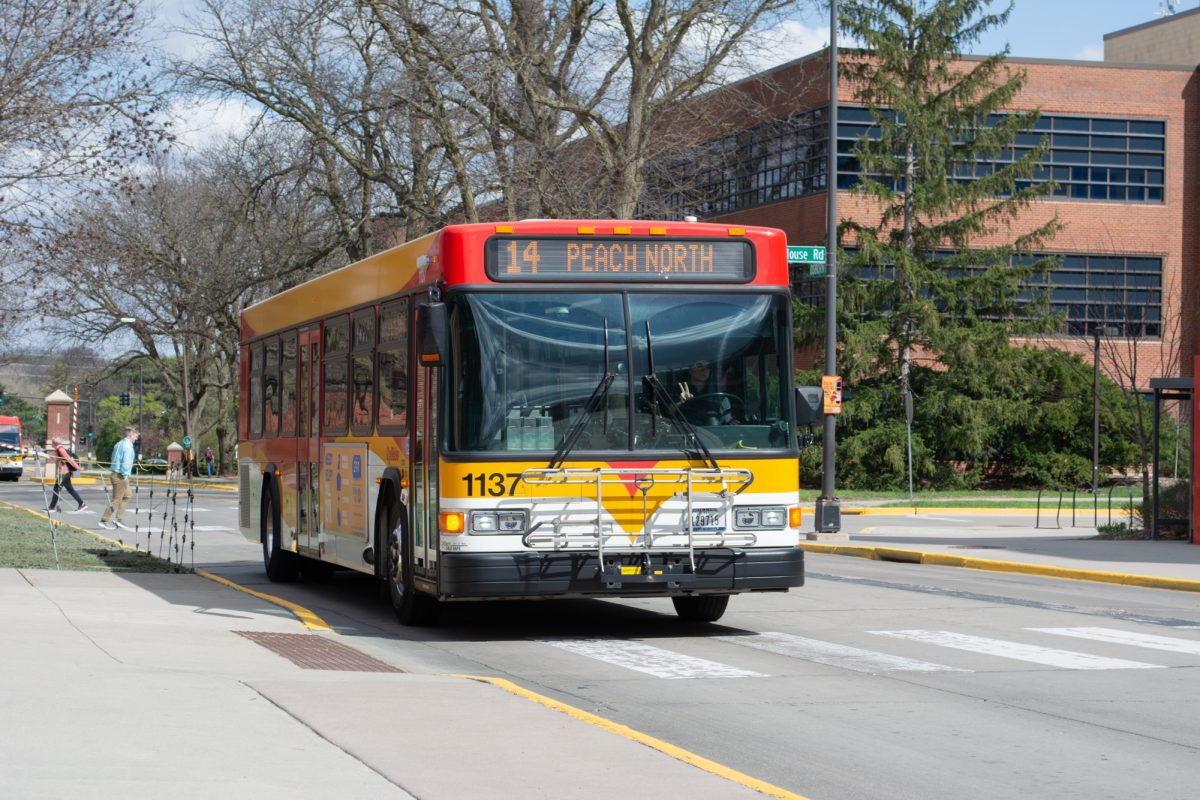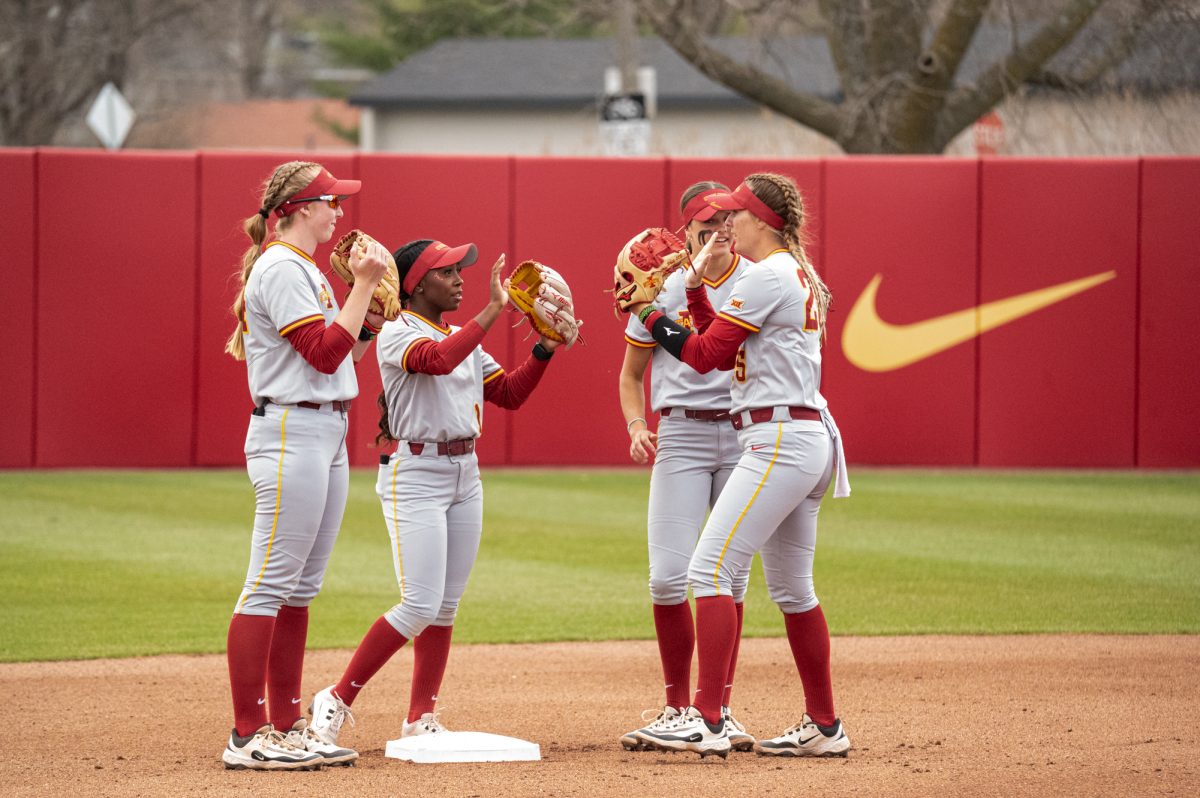ISU Bike Share Program
May 4, 2015
On the first floor of the Armory there is a group of cubicles clustered together that form many teaching laboratories. On the northeast corner of this cluster resides the Iowa State Bike Share Studio, a workspace littered with disassembled bike prototypes and miscellaneous spare parts for the Bike Share Program. The program aims to allow students to check out bicycles for use around campus.
Jordan Maurice first started the program in the spring of 2013 as a project for his industrial design class, said Mark Kargol, graduate research assistant in the college of design and team leader of the Bike Share Program. By the time he graduated later that spring, Maurice had already talked with the Government of the Student Body and university officials to figure out how he could get his program to work.
The following fall GSB continued looking into Maurice’s program. When Kargol and Steven Herrnstadt, professor of industrial design found out about the GSB plans they asked them to let the college of design continue working on the project.
“When we asked [the GSB] to let design students design and work on the project, their initial reaction was ‘can you do that?’ And we told them we could,” Kargol said.
Once the GSB allowed the college of design to start working on the program, they immediately set up a studio with funds provided by the GSB and Tom Hill, vice president of student affairs.
Hill really likes the opportunities the program provides students, Herrnstadt said. By not hiring an outside company to design the program, students can gain hands on experience that they can transfer to any job they pursue.
“What I really like doing is getting these students to learn that they can come into any situation and know they can learn and succeed,” Hernnstadt said.
Since it’s initial reboot the Bike Share Program has grown to incorporate 10 different departments, including students from the college of design, the department of engineering and the department of economics.
“I like the way the students depend on each other,” Herrnstadt said. “They each have their strengths but they’ve crossed over into different disciplines.”
The main idea for the program is to provide free bicycles to any ISU student or staff for use around campus. Any person with an ISU ID could swipe their ID in a card reader and a bike would be unlocked for them to ride. Once someone checks the bike out it will be registered to them until they return it to another station.
Station placement is not completely known yet, but members working on the program have done extensive research to find the best placement for the docking stations. They have monitored foot traffic by hour so they know where the busiest parts of campus are at any given hour. Surveys of all of the current bike racks on campus where also taken into consideration.
A model that shows possible locations for the bike docking stations presented to the GSB shows the majority of the stations will be placed around the residence halls. Other stations will boarder the perimeter of central campus, while others will be placed near major buildings, as distinguished by the foot traffic survey.
It is unknown whether the Bike Share Program will ever be implemented on campus, Herrnstadt said, that is a decision that the GSB and university will have to make.
“If campus was already set up for a bike share [program], we would be ready by October,” Kargol said. “But because the campus is not set up for the program, we still have at least two to three more years until we could start implementing it.”
According to the model sent to the GSB major changes would need to be made to the campus before the Bike Share Program could be introduced on campus. These changes include updating the website so students can easily find the rules and regulations for biking, increasing the number of road signs informing motorists to watch out for bicyclists, adding more bike lanes, eliminating some on-street parking and adding more bike paths through campus.
“Lots of pedestrians use the bike path, lots of bikers use the pedestrian path and that just doesn’t make a whole lot of sense,” said a staff respondent to a survey conducted by the Bike Share Program.
In that same survey people were asked how safe they feel about riding their bike on campus, the vast majority said that they did not feel safe.
The cost of existing bikes in similar programs runs about $5,000 per bike, the Bike Share Program wants to make theirs cost less, Herrnstadt said.
The Iowa State Bike Share Program is not modeled after any specific existing program rather it is an improvement on what is already out there, Kargol said.
“We took what we thought was good from other programs, and improved upon what we thought didn’t work,” Herrnstadt said.
Herrnstadt and Kargol are very proud of their students and know that by working on the bike share program they have prepared themselves for bright futures.
“We have accomplished something in three semesters that a company couldn’t do in that time,” Kargol said.
Herrnstadt said he is glad that the students got a chance to work on a project that can prepare them for work after the graduate.
I’m really excited by the students that have been involved in this. I’m excited with where we’ve come. This is not an easy project,” Herrnstadt said.






